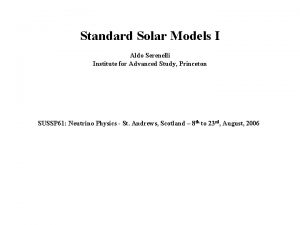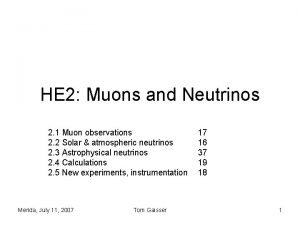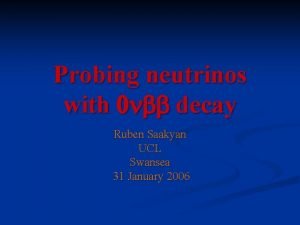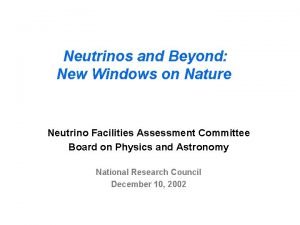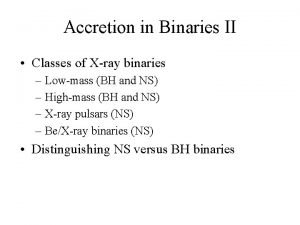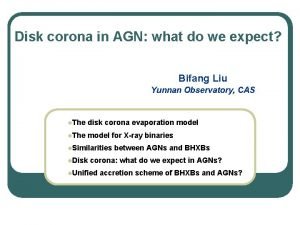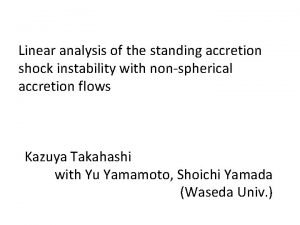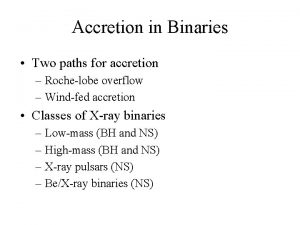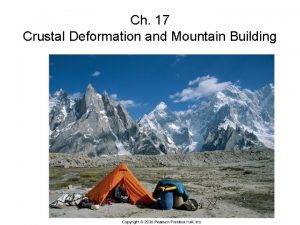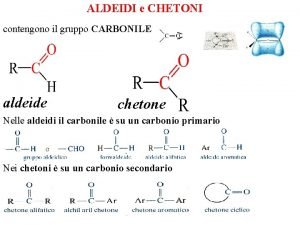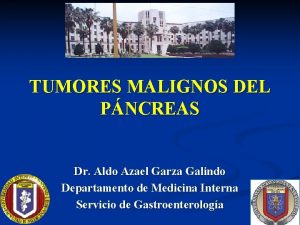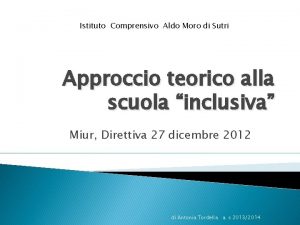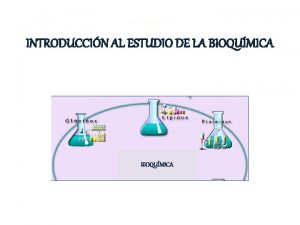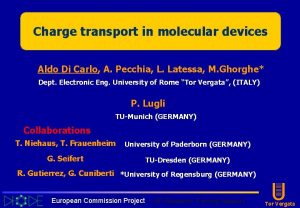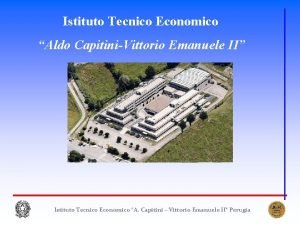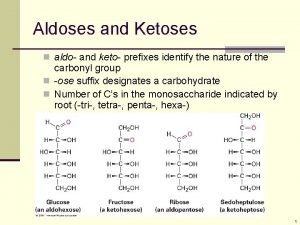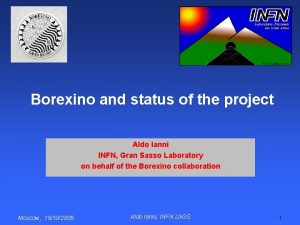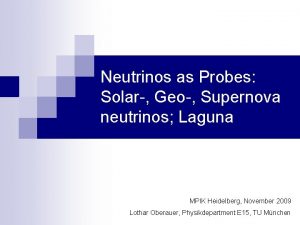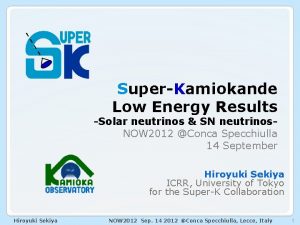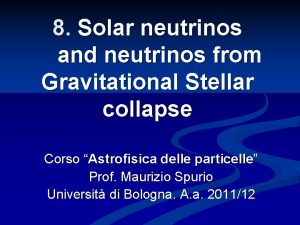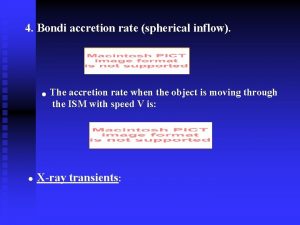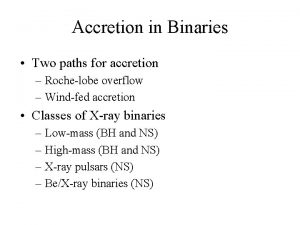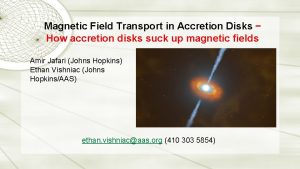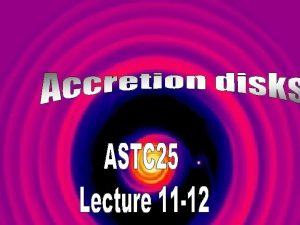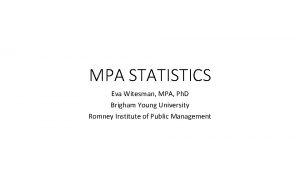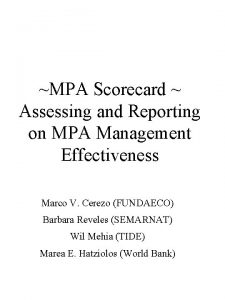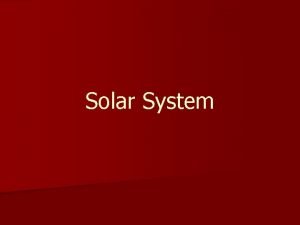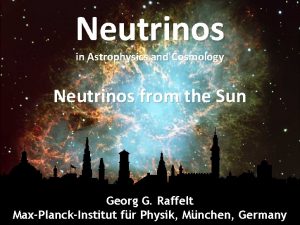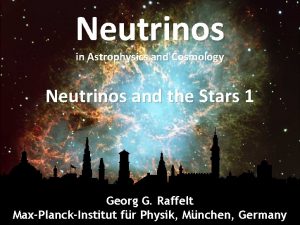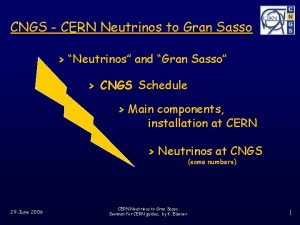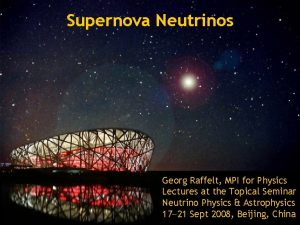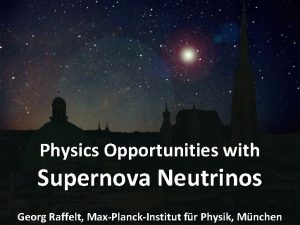Solar models Composition neutrinos accretion Aldo Serenelli MPA






























- Slides: 30

Solar models Composition, neutrinos & accretion Aldo Serenelli (MPA) INT - 08. 10

Outline Abundances from solar photosphere 3 D-atmosphere model line formation Effects on helioseismology and neutrinos can n experiments tell something about Z? Accretion onto the Sun? Surface/core composition difference INT - 08. 10

Revision of solar abundances Solar atmosphere: convection 3 -D models Improved atomic and molecular trans. prob. Relaxation of LTE assumption INT - 08. 10

Solar atmosphere 1 D models do not capture basic structure of atmosphere Energy transported by convection, radiated away at the top Flow is turbulent Up- and downward flows asymmetric Not unique relation T vs. depth Magnetic fields INT - 08. 10 Credit: N. Brummell

3 D models “Box in a star”: simultaneous solution of radiative transfer (RT) and hydrodynamic equations RT is “rudimentary”: frequency dependent opacities combined in a few (4 to 12) bins (10^5 in 1 D) LTE not good opacities (e. g Mg I, Ca I, Si I, Fe I) 1 D models used as benchmark effects on 3 D may be different However… it looks good Credit: Bob Stein INT - 08. 10

3 D models – testing the model Good handle on granulation topology timescales convective velocities intensity brightness contrast Credit: Bob Stein INT - 08. 10

3 D models – testing the model Line shapes: bisectors Asplund et al. 2000 INT - 08. 10

3 D models – testing the model Limb darkening Asplund et al. 2009 Credit: Matt Carlsson INT - 08. 10

3 D models – testing the model Other models CO 5 BOLD (aka Paris group) Max Planck for Solar System Research (coming from solar MHD) Ludwig et al. 2010 Comparison of structure between models undergoing (slowly) INT - 08. 10

3 D models – line formation 3 D background model atmosphere Asplund et al. 2009 detailed radiation transfer for line formation determination of abundances INT - 08. 10

3 D models – line formation Formal requirement: 3 D background model + 3 D-RT and 3 D-NLTE In practice 3 D-RT + 3 D-NLTE only for O Different combinations 3 D-RT + 1 D-NLTE (e. g. C) Multi 1 D + 1 D-NLTE (e. g. Fe) 1 D + 1 D-NLTE 1 D + LTE Warning: e- and H collision rates (crucial for NLTE) missing for almost all elements, including C & N INT - 08. 10

3 D models – line formation Pros: identification of blends Asplund et al. 2009 But be aware of inconsistent treatment of lines in blends e. g. [OI] and Ni INT - 08. 10

3 D models – line formation Pros: consistency (after some massage), e. g. atomic and molecular (very T sensitive) indicators Asplund et al. 2009 INT - 08. 10

3 D models – line formation Agreement with meteoritic abundances Si used as reference D=0. 00 +- 0. 05 dex Asplund et al. 2009 INT - 08. 10

3 D models – last two words of warning Hydrogen (T sensitive) lines poorly reproduced Regardless of central values, small uncertainties (too optimistic? ) Caffau et al. give systematically larger CNO abundances & uncertainties, x 2 for C INT - 08. 10

Effect on solar models: Helioseismology Reduction in CNONe (30 -40%) boundary in RCZ Reduction in Ne + Si, S, Fe (10%) YS Sound speed Z/X= 0. 0229 (GS 98), 0. 0178 (AGSS 09) INT - 08. 10 Density

Effect on solar models: Helioseismology Estimation of uncertainties in sound speed and density from MC simulations (5000 models) AGS 05 Density profile: excellent example of correlated differences INT - 08. 10

Effect on solar models: Helioseismology Low degree modes (l=0, 1, 2, 3) from +4700 days Bi. SON Separation ratios Enhance effects in the core INT - 08. 10

Effect on solar models: Helioseismology INT - 08. 10

Effect on solar models: Helioseismology GS 98 models me averaged over R < 0. 2 R 8 Both compositions me = 0. 723± 0. 003 AGS 05 models Chaplin et al. (2007) INT - 08. 10

Effect on solar models: Helioseismology Christensen-Dalsgaard (2009) INT - 08. 10

Effect on solar models: neutrino fluxes Direct measurements of 7 Be and 8 B from Borexino and SNO INT - 08. 10

Effect on solar models: neutrino fluxes Gonzalez-Garcia et al. arxiv: 0910. 4584 Global analysis of solar & terrestrial n data 3 flavor-mixing framework Basic constraints from pp-chains and CNO cicles Luminosity constraint (optional) Exhaustive discussion of importance of Borexino INT - 08. 10

Effect on solar models: neutrino fluxes No luminosity constraint No Borexino INT - 08. 10 Luminosity constraint

Effect on solar models: neutrino fluxes Gonzalez-Garcia et al. arxiv: 0910. 4584 GS 98 AGS 05 P(GS 98) = 43% P(AGS 05)= 20% INT - 08. 10

Effect on solar models: neutrino fluxes 2= GS 98 5. 2 (74%) AGS 05 5. 7 (68%) Is comparison fair? INT - 08. 10 AGS 09 5. 05 (76%)

Additional motivation to measure CN fluxes Solar vs. solar twins (Melendez et al. 2009, Ramirez et al. 2009) same Teff, same gravity, same Fe abundance same systematics differential study INT - 08. 10

Additional motivation to measure CN fluxes (V/R)8 ~ 0. 05 -0. 08 dex > (V/R)twins IF evidence for accretion after planet formation Volatiles solar interior solar twins interior ≠ surface (eg AGS 09) INT - 08. 10 Refractories

Additional motivation to measure CN fluxes Accretion: schematic composition stratification “Solar comp. ” Transition Twins composition INT - 08. 10 (V/R) 0. 05 -0. 10 dex contrast between interior and surface in addition to overall Z contrast CN fluxes affected linearly

Conclusions Abundances 3 D atmosphere models big step forward line formation still mostly 1 D NLTE effects: sometimes, not in 3 D atm. model inconsistent treatment of different elements and lines systematics not well understood different groups – different results (abundances and errors) Solar models: helioseismology nothing fits in low-Z models different constraints sensitive to different abundances Solar models: neutrinos current experiments do not discriminate between Z CN measurement needed test of accretion? INT - 08. 10
 Sun cno cycle
Sun cno cycle Neutrinos
Neutrinos Neutrinos
Neutrinos Neutrinos
Neutrinos Accretion
Accretion Zone of in situ accretion
Zone of in situ accretion Accretion disk corona
Accretion disk corona Example of griffin ford model
Example of griffin ford model Standing accretion shock instability
Standing accretion shock instability Conditional asset retirement obligation
Conditional asset retirement obligation Accretion
Accretion Plunging syncline vs syncline
Plunging syncline vs syncline Aldo dagnino
Aldo dagnino Aldeide
Aldeide Dr. aldo azael garza galindo
Dr. aldo azael garza galindo Aldo mancurti
Aldo mancurti Istituto comprensivo sutri
Istituto comprensivo sutri Aldo montano celiachia
Aldo montano celiachia D y l
D y l Primary aldo
Primary aldo Aldo novak
Aldo novak Aldo di carlo
Aldo di carlo Aldo international shipping
Aldo international shipping Istituto capitini perugia
Istituto capitini perugia Herbert stoddard
Herbert stoddard Aldo decisiones
Aldo decisiones Aldoketose
Aldoketose Aldo de albuquerque barreto
Aldo de albuquerque barreto Aldo ianni
Aldo ianni Indicaciones para un instructivo en modo imperativo
Indicaciones para un instructivo en modo imperativo Aldo sugars
Aldo sugars
